Birds of Our Observations
Let yourself be inspired by our fascinating observations from the past years and discover the diverse world of nature. Here, we regularly present a compilation of our latest discoveries and observations.
If you are looking for a specific bird, you can find it using the search field:
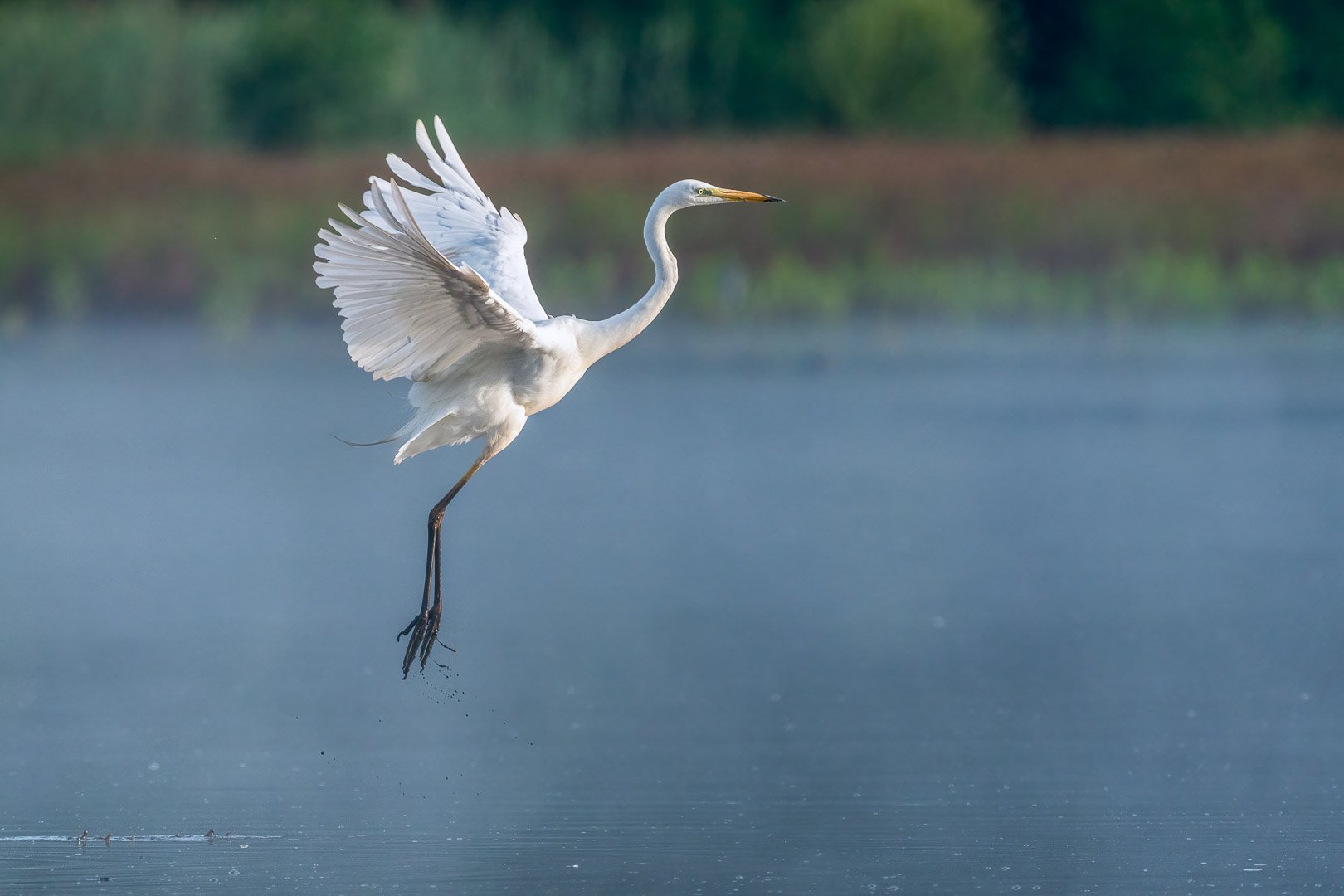
Great egret (Ardea alba)
The great egret (Ardea alba) is a species belonging to the heron family. With a body length of up to one meter and a wingspan of up to 1.70 meters, it is one of the largest heron species in Europe. The weight varies between 0.7 and 1.5 kilograms. The great egret mainly feeds on insects, amphibians, fish, and
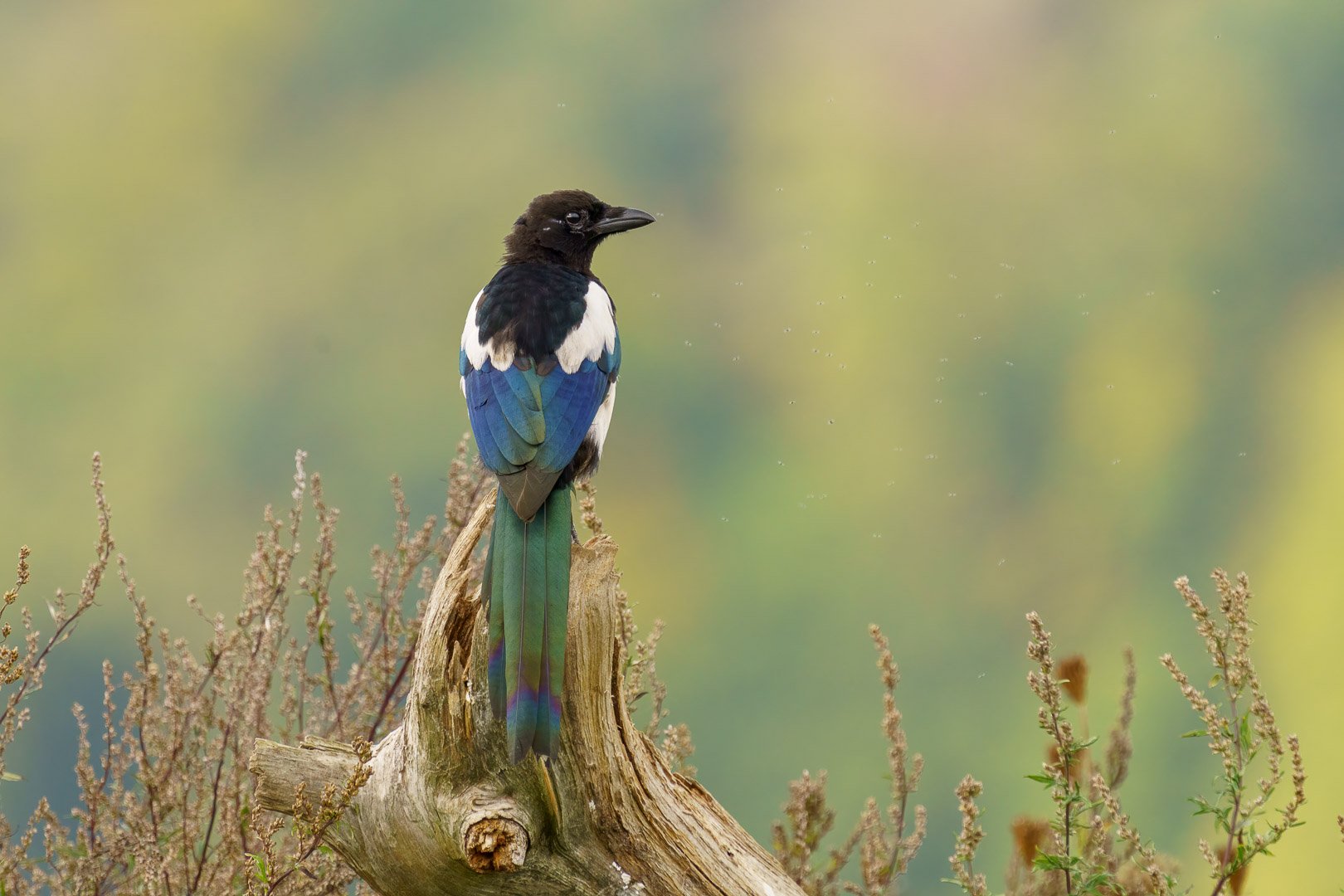
Eurasian magpie (Pica pica)
The Eurasian magpie (Pica pica) is a bird from the family of corvids and inhabits large parts of Europe, Asia, and Northern North Africa. It is particularly common in urban areas and is easily recognizable due to its black-and-white plumage with long tail feathers. Magpies are among the most intelligent birds and are considered one of the most intelligent non-human beings. The nidopallium

Hooded crow (Corvus cornix)
The hooded crow (Corvus cornix) belongs to the family of corvids (Corvidae) and is a Eurasian bird species that is widespread in Northern, Eastern, and Southeastern Europe as well as parts of the Near East. It is an ashy-gray bird with a black head, neck, wings, tail, and thigh feathers, as well as a black bill, eyes, and feet. As an omnivore, it resembles the carrion crow (Corvus corone) in morphology and behavior to such an extent that many experts long regarded it as a subspecies of the same. Hybridization,
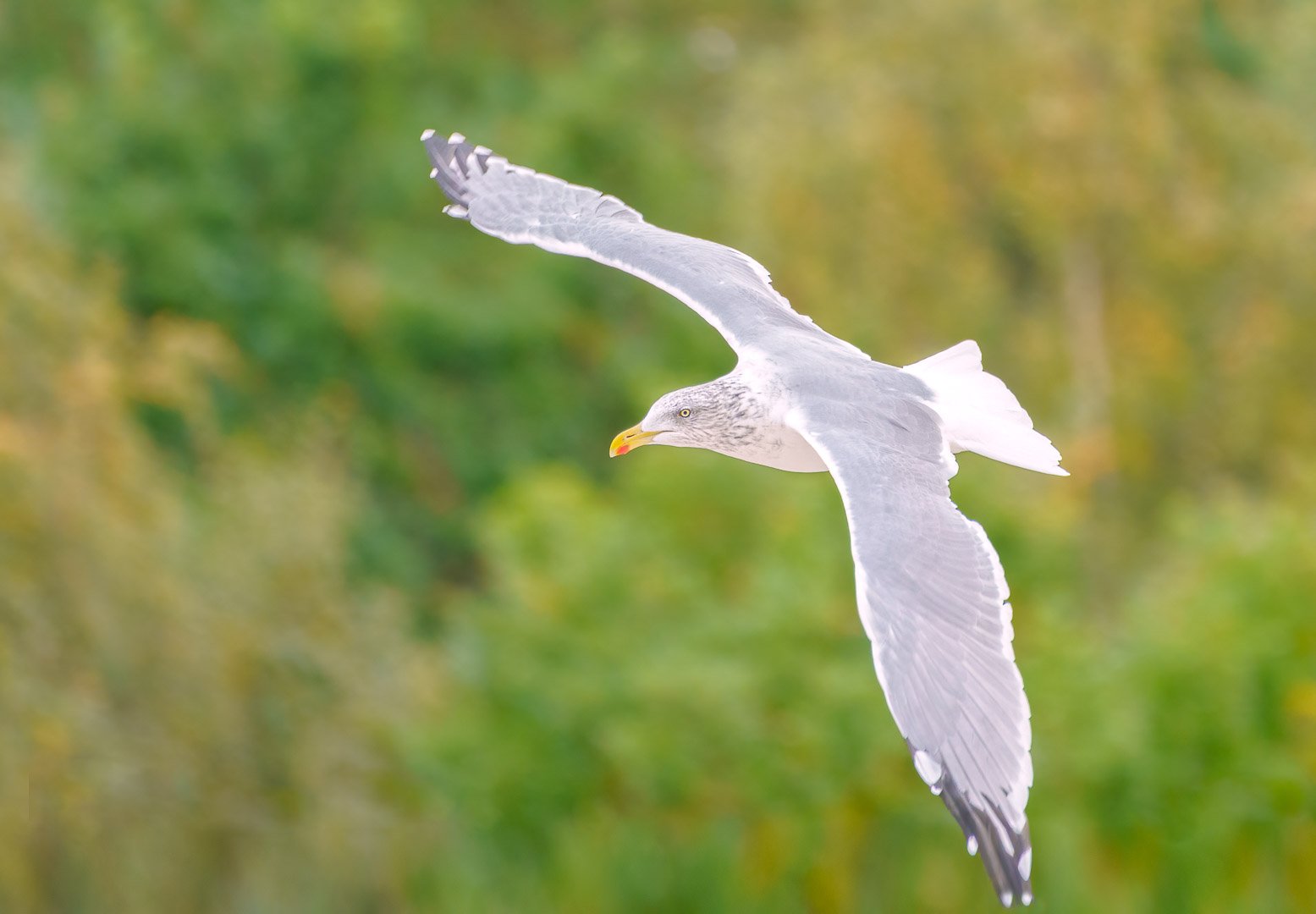
European herring gull (Larus argentatus)
The European herring gull (Larus argentatus) is the most common large gull in northern and western Europe and a bird species within the gulls (Larinae) subfamily. Its distribution ranges from the coast of Fennoscandia across the Baltic Sea, the North Sea, and the English Channel to the Atlantic coast of France and the British Isles, as well as Iceland. As colony breeders, herring gulls are mainly found on inaccessible islands.

Black-headed gull (Chroicocephalus ridibundus)
The black-headed gull (Chroicocephalus ridibundus), formerly known as Larus ridibundus, inhabits wide areas of the northern Palearctic, from Iceland and Ireland to Kamchatka, as a small species of gull. It prefers to breed in the littoral zones of larger inland waters but has increasingly also been found nesting on coasts in recent times. In northern Central Europe, the species is a common breeding bird and winters in large numbers in Central and Western Europe. The gull reaches a body length of 35 to 39 cm and a wingspan of

Egyptian goose (Alopochen aegyptiaca)
The Egyptian goose (Alopochen aegyptiaca) originates from Africa and is the only known representative of its genus. It is often classified as a semi-goose and prefers nutrient-rich inland lakes and rivers as its habitat. In Africa, it is considered the most commonly encountered waterfowl. In recent decades, the Egyptian goose has spread along the Rhine in Central Europe, starting from captive escapees mainly originating from the Netherlands. By now, it has also

Mandarin duck (Aix galericulata)
The mandarin duck (Aix galericulata) belongs to the family of waterfowl (Anatidae) and the genus Aix. Originally from East Asia, there are also feral park populations in Europe that have arisen from escaped captive birds. While the duck species has been highly popular as ornamental poultry for centuries, populations in its original range are declining, and

Canada goose (Branta canadensis)
The Canada goose (Branta canadensis) belongs to the family of waterfowl (Anatidae) and is the most widespread goose worldwide. Its original habitat is in North America, where it is a characteristic bird of lowlands and breeds at inland lakes in prairie and agricultural areas. Its migration in characteristic V-formation to wintering grounds and back to breeding sites in the spring symbolizes in
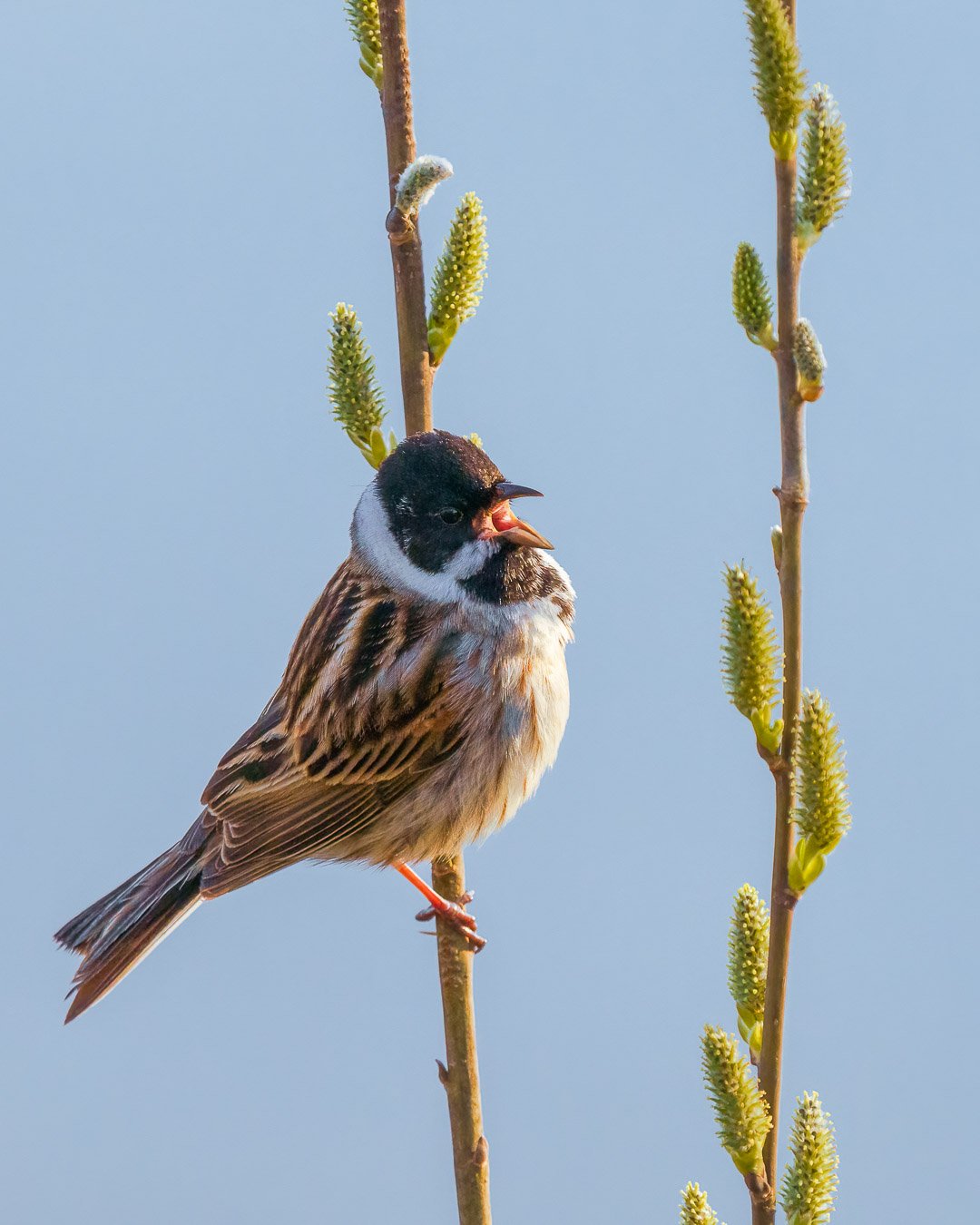
Common reed bunting (Emberiza schoeniclus)
The common reed bunting (Emberiza schoeniclus), also known as the reed sparrow, belongs to the family of buntings (Emberizidae) and is native to Europe, North Africa, and East Asia. It is only absent from some Mediterranean islands. The reed bunting is commonly found, especially in reed and sedge habitats. In Central Europe, it is a partial migrant, as most birds leave the region in October/November and return in February and March. During winter, the reed bunting resides in North Africa.

Common tern (Sterna hirundo)
The common tern (Sterna hirundo) belongs to the subfamily of terns (Sterninae) and is a widespread, although not very common, breeding and summer bird species in Central Europe. During migration periods, many migrating birds can also be observed in the Central European region. The common tern resembles the coastal tern but is

Eurasian hoopoe (Upupa epops)
The Eurasian hoopoe (Upupa epops) belongs to the hoopoe family (Upupidae), a bird family classified in the order Bucerotiformes along with the woodhoopoes (Phoeniculidae). The previous classification under the Coraciiformes order is no longer common. Depending on the scientific perspective, there are between five and ten subspecies, with African hoopoes, which were previously considered subspecies of Upupa epops, now regarded as separate species, except for the subspecies found in Egypt.

Cuckoo (Cuculus canorus)
The cuckoo (Cuculus canorus) is a member of the Cuculiformes and includes birds such as the roadrunners, anis, and coucals. This species is a widespread summer migrant to Europe and Asia, and it winters in Africa. The cuckoo is a brood parasite, which means it lays its eggs in the nests of other bird species, specifically targeting hosts like the dunnock, meadow pipit, and others.

Osprey (Pandion haliaetus)
The Osprey, scientifically known as Pandion haliaetus, is a bird of prey and belongs to its own monotypic family Pandionidae due to unique characteristics. Although the Osprey is distributed almost worldwide, it is also found in Central Europe. It should be noted that the Osprey does not belong to the true eagles. Ospreys are slender, medium-sized raptors with long wings. They are known for their ability to catch fish, which they hunt from lakes, rivers, and coastal waters. Ospreys have a distinctive appearance with their white head, brownish upperparts, and white underparts with dark spots. They also have striking yellow eyes and powerful talons to grasp their prey. Ospreys build large nests of sticks and twigs in tall trees or on rocky outcrops near water bodies. They are migratory birds and spend the winter in warmer regions before returning to their breeding grounds in spring.

European Robin (Erithacus rubecula)
The European Robin (Erithacus rubecula) belongs to the family of Old World flycatchers (Muscicapidae) and is native to North Africa, Europe, Anatolia, and Mediterranean islands. It mainly feeds on insects, small spiders, worms, and snails. The European Robin's song begins about an hour before sunrise and can be heard almost all year round until dusk. Due to its frequent sightings, appearance, and often short flight distance, the European Robin is
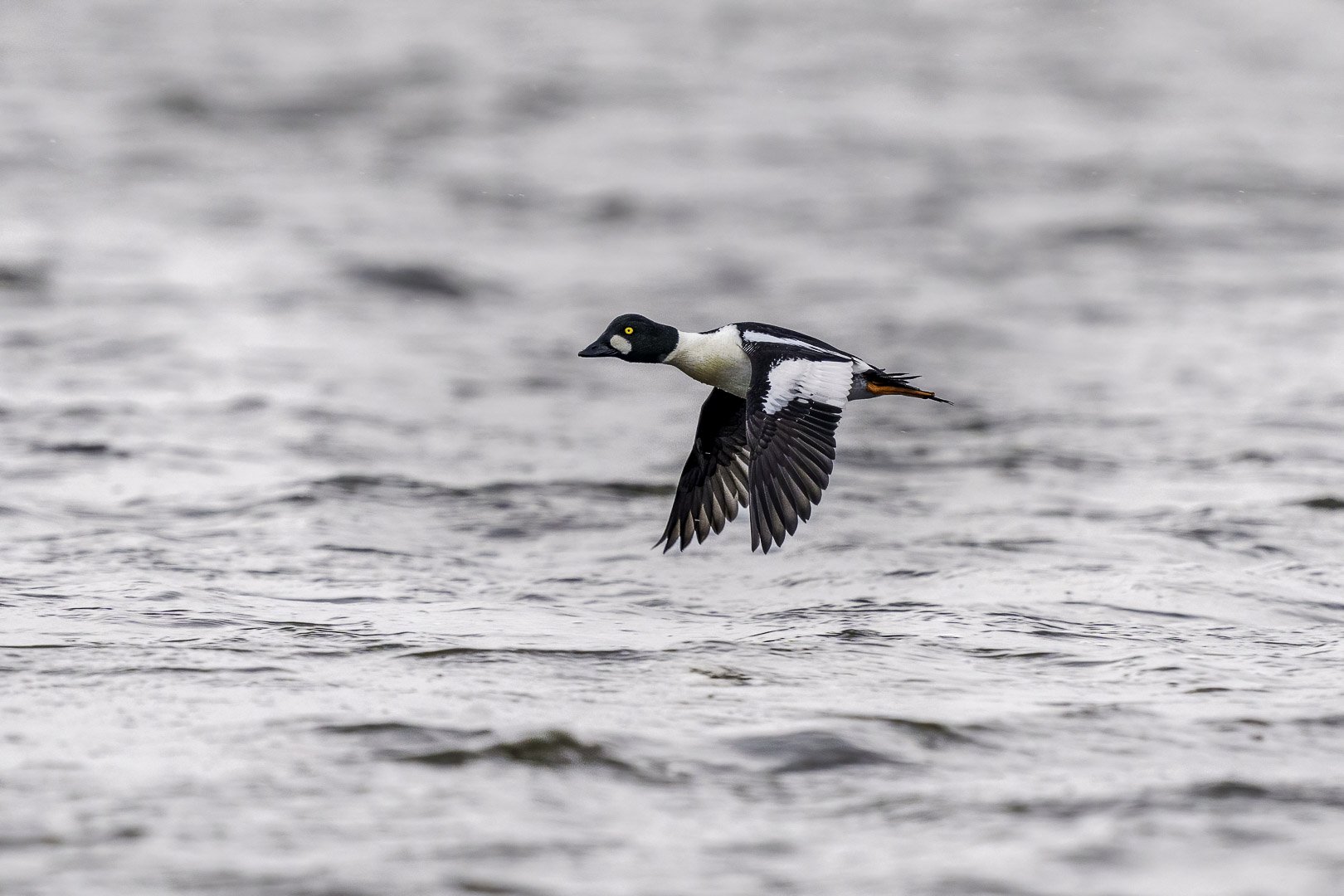
Common goldeneye (Bucephala clangula)
The common goldeneye (Bucephala clangula) belongs to the family of waterfowl (Anatidae) and is widely distributed across the Holarctic region, primarily in the northern coniferous forest zone. The stout appearance of the species is characterized by its short neck and relatively large head. There are two subspecies of the common goldeneye, which are distributed from Europe through Siberia to America. Due to its suitability for captive breeding, it is classified among the sea ducks.
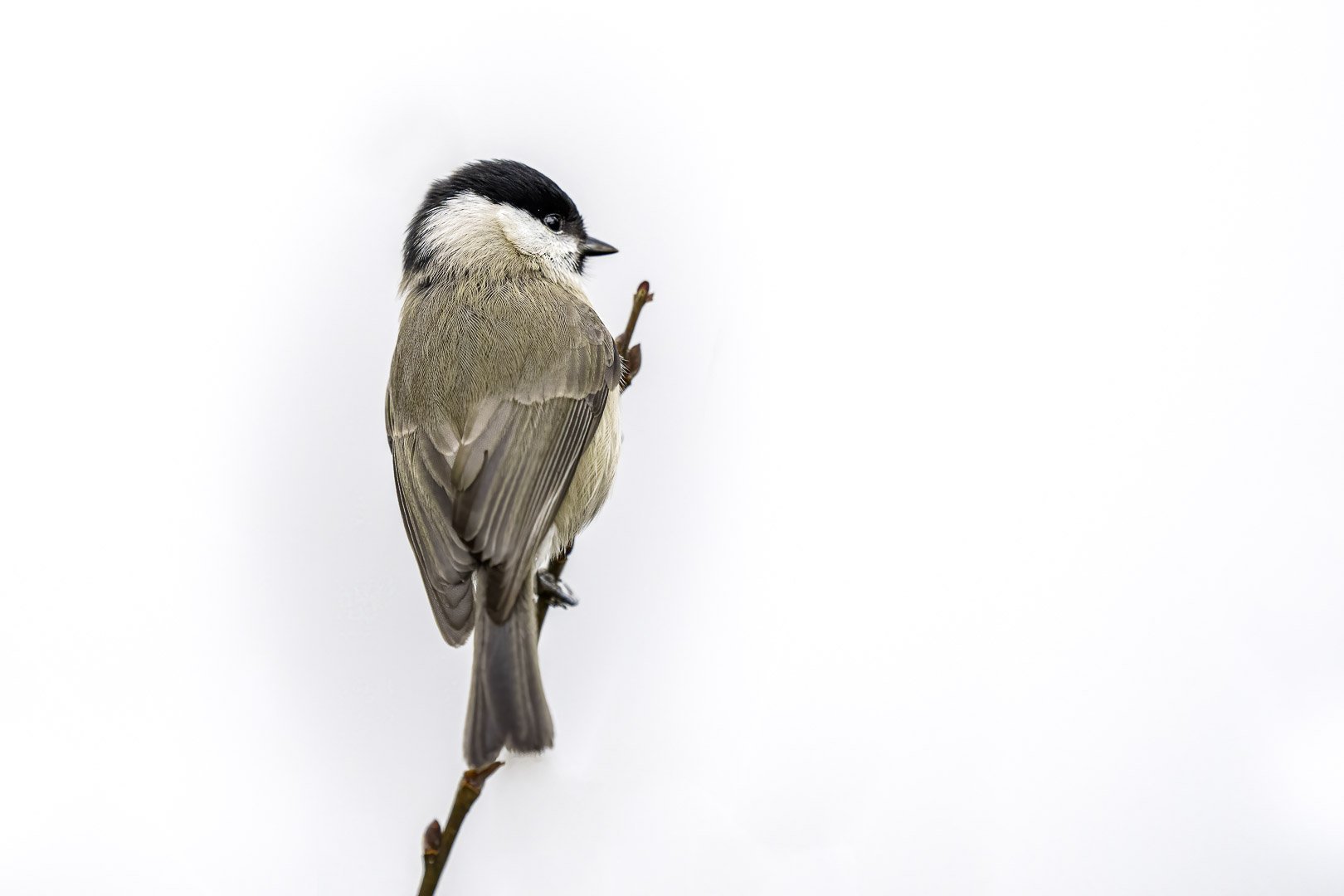
Marsh Tit (Poecile palustris)
The Marsh Tit (Poecile palustris) is a songbird from the tit family (Paridae) closely related to the willow tit and the coal tit. The Marsh Tit has a black crown and nape, pale cheeks, a brown back, and grayish-brown wings and tail. Between 8 and 11 subspecies are recognized. Due to its similarity to the willow tit, identification can be challenging, especially in areas where the two species overlap.

Eurasian siskin (Spinus spinus)
The Eurasian Siskin (Spinus spinus) is a small and sociable bird, a member of the finch family, found in forested areas throughout Europe and Euro-Siberia. Its diet consists mainly of various seeds, with a preference for alders and conifers. Males are characterized by their yellow face and breast, accompanied by a black cap, while females exhibit a more inconspicuous gray-striped pattern. These birds display a unique migration pattern, often venturing south in large numbers during
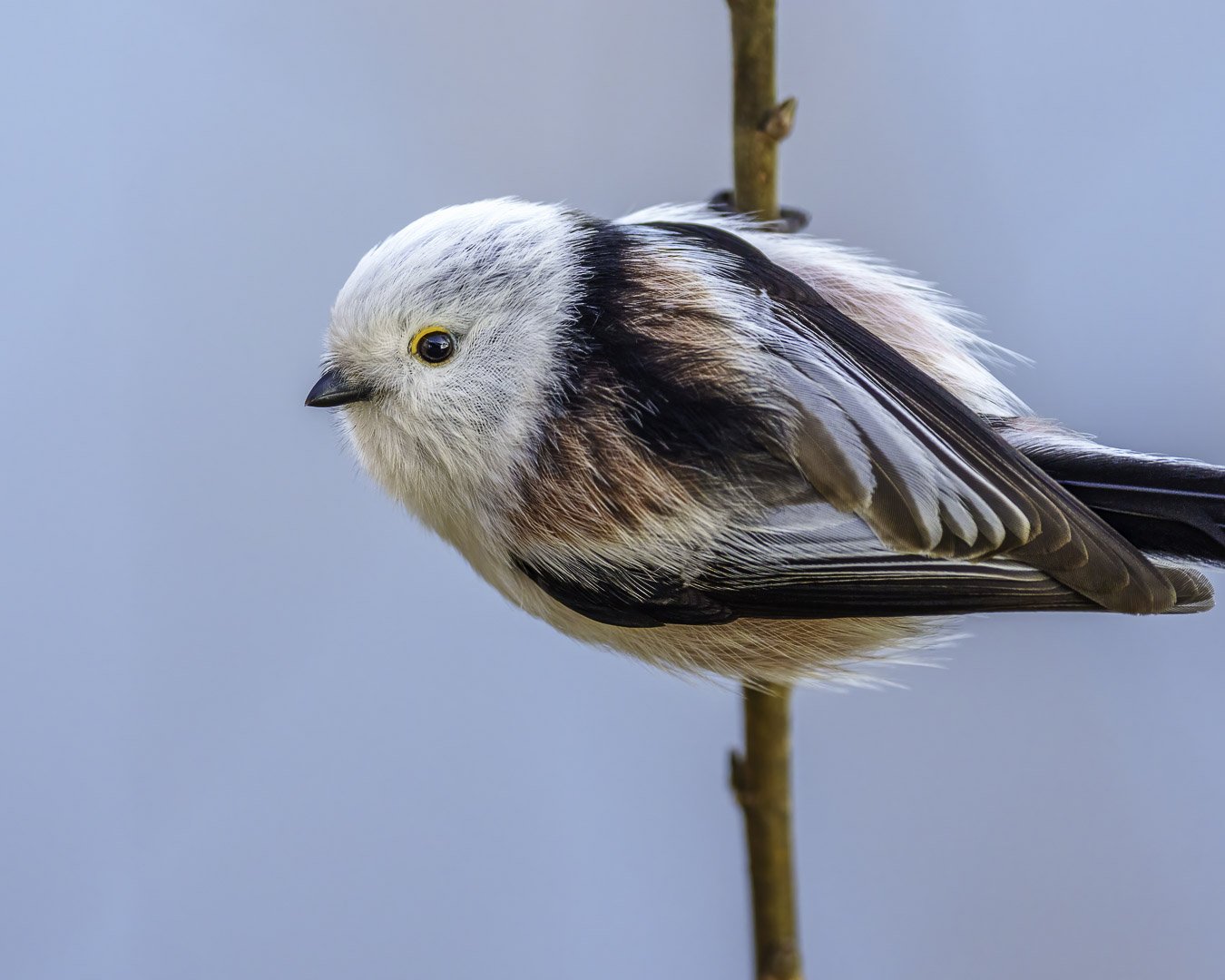
Long-tailed tit (Aegithalos caudatus)
The Long-tailed Tit (Aegithalos caudatus) is a small passerine bird from the family of long-tailed tits (Aegithalidae), named after its long tail, which allows it to balance precisely while searching for food on fine branches. It prefers light forests, forest edges, and parks with dense undergrowth as
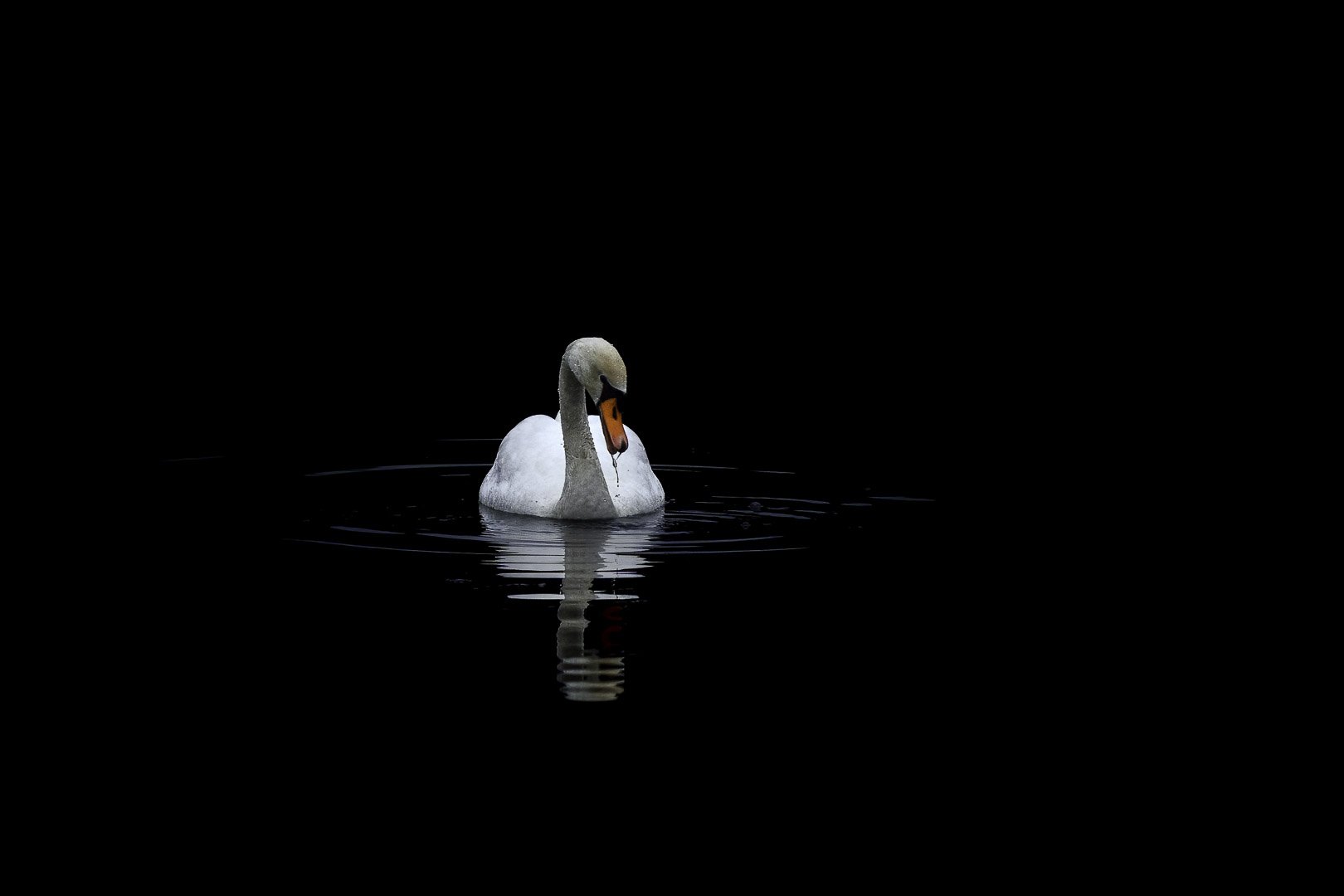
Mute swan (Cygnus olor)
The mute swan (Cygnus olor) belongs to the genus of swans (Cygnus) within the family of waterfowl (Anatidae) and the subfamily of geese (Anserinae). This bird species is semi-domesticated and widespread in Central Europe. It prefers lakes, park and fishponds, shallow bays, and open river courses in winter. The species is named after the black knob at the base of its bill. Swans have few natural predators in Central Europe, but mute swans are a huntable species in Germany, with several thousand shot every year. The strong territoriality of the swans during the breeding season and losses during severe winters contribute to the regulation of the population.
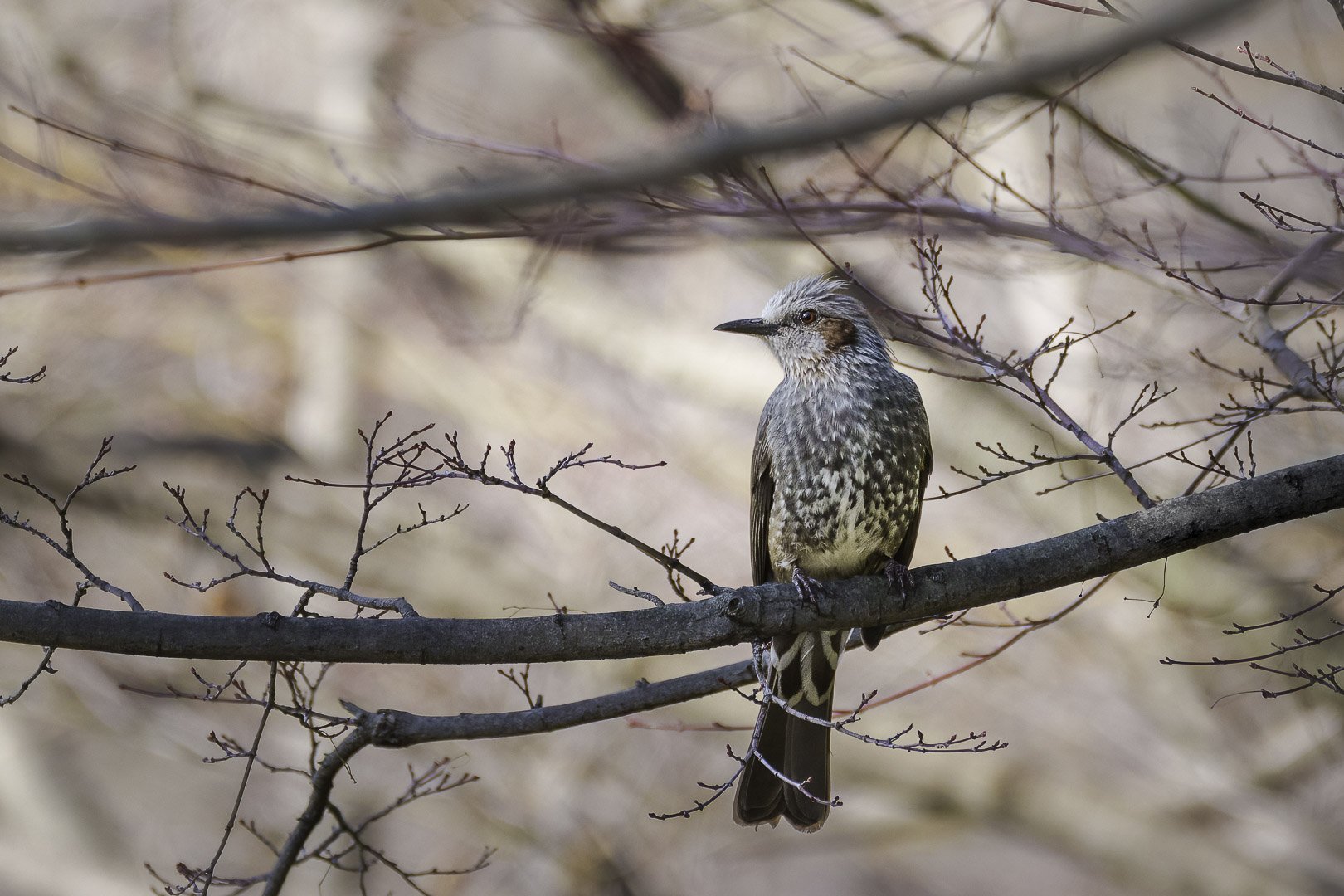
Brown-eared bulbul (Hypsipetes amaurotis)
The Orphean Bulbul (Hypsipetes amaurotis) is native to East Asia. It is extremely common within the northern part of its range and can be found from southern Sakhalin to the northern Philippines. Measuring about 28 cm in length, Orphean Bulbuls are gray-brown with brown cheeks and a long tail. Although they prefer wooded areas, they easily adapt to urban and rural environments, and their loud, squeaky calls are familiar in most areas of Japan.
